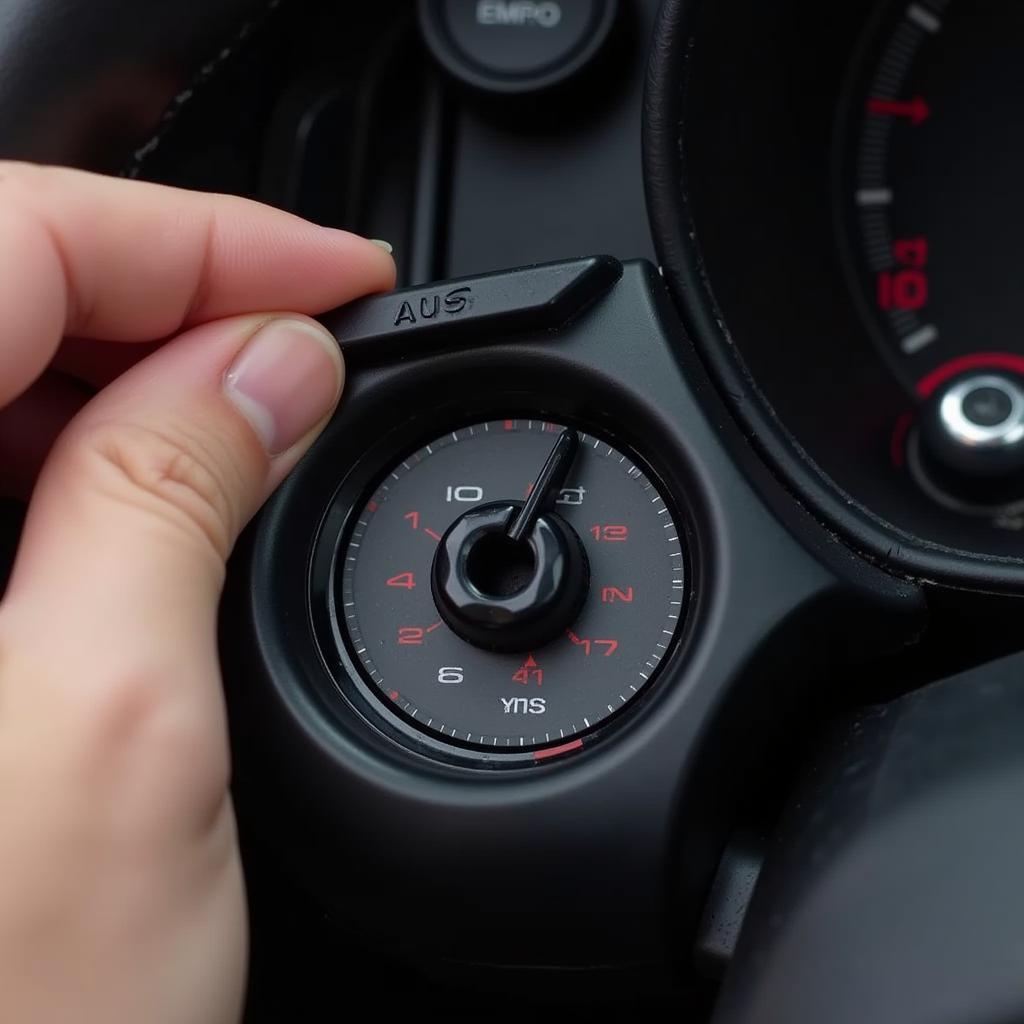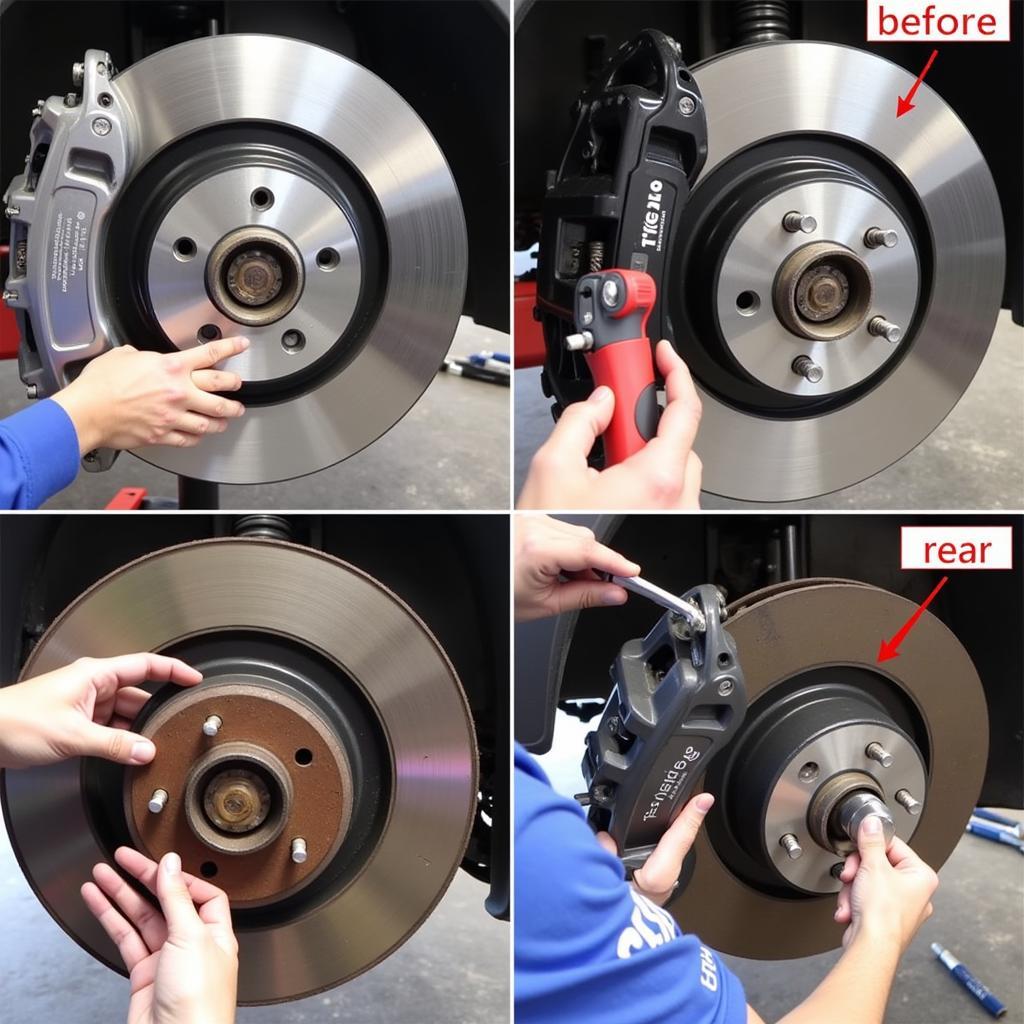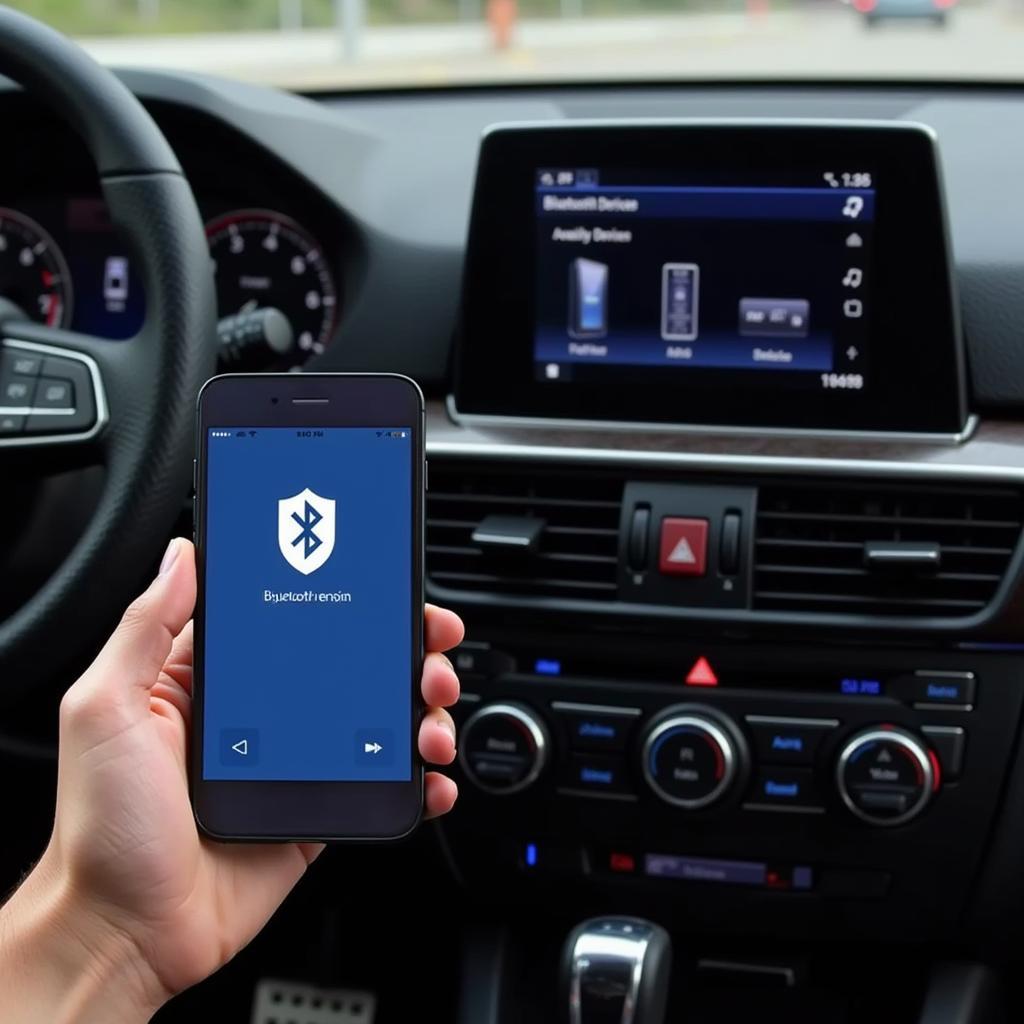The yellow brake warning light on your Audi A4 dashboard can be a cause for concern, but it doesn’t always mean an emergency. Unlike the red brake warning light, which often signals a critical issue with your braking system, the yellow light usually indicates a less urgent problem that still needs your attention. This article will guide you through the common causes of a yellow brake warning light on your Audi A4 and provide potential solutions to get you back on the road safely.
Understanding Your Audi A4’s Brake Warning System
Your Audi A4 is equipped with a sophisticated electronic brake system designed to ensure optimal braking performance and safety. The yellow brake warning light is part of this system and serves as an early warning indicator. It can be triggered by various factors, from worn brake pads to issues with the electronic parking brake.
Common Causes of a Yellow Brake Warning Light
Here are some of the most common reasons why your Audi A4 might display a yellow brake warning light:
-
Worn Brake Pads: The most frequent culprit is worn-down brake pads. Most Audi A4 models have a brake pad wear sensor that triggers the yellow warning light when the pads reach a certain thickness, indicating it’s time for a replacement.
-
Malfunctioning Brake Pad Wear Sensor: Sometimes, the brake pad wear sensor itself can malfunction due to damage or corrosion, causing the warning light to illuminate even if the brake pads are still in good condition.
-
Low Brake Fluid Level: Brake fluid is crucial for transmitting hydraulic pressure from the brake pedal to the brakes. If the fluid level is low, usually due to a leak, the yellow brake warning light may come on.
-
Issues with the Electronic Parking Brake: Some Audi A4 models have an electronic parking brake (EPB). If there’s a problem with the EPB system, such as a faulty switch or sensor, it can trigger the yellow warning light.
-
ABS System Fault: While less common, a fault within the Anti-lock Braking System (ABS) can also illuminate the yellow brake warning light.
Diagnosing the Problem
Determining the exact cause of the yellow brake warning light requires further inspection. Here’s what you can do:
- Check Your Brake Pads: Visually inspect your brake pads through the spaces between the wheel spokes. If you see less than ¼ inch of friction material remaining, it’s time for new brake pads.
- Inspect Brake Fluid Level: Locate the brake fluid reservoir under the hood and check the fluid level. It should be between the minimum and maximum markers.
- Scan for Fault Codes: A diagnostic scanner can read fault codes stored in your Audi A4’s computer, providing more specific information about the issue.
 Checking Audi A4 brake fluid reservoir
Checking Audi A4 brake fluid reservoir
Addressing the Yellow Brake Warning Light
The solution to your yellow brake warning light depends entirely on the underlying cause:
- Worn Brake Pads: Replace the brake pads on all four wheels if they’re worn down. It’s generally recommended to replace all brake pads at the same time, even if only one set is worn, to ensure even braking performance.
- Faulty Brake Pad Wear Sensor: If the sensor is damaged or corroded, it needs to be replaced.
- Low Brake Fluid: Top up the brake fluid to the recommended level using the correct brake fluid type specified in your owner’s manual. If the level drops again quickly, you likely have a leak that needs immediate attention.
- Electronic Parking Brake Issues: Troubleshooting EPB issues can be complex and may require specialized tools. It’s best to consult a qualified mechanic for diagnosis and repair.
- ABS System Fault: Similar to EPB issues, ABS faults are best handled by a professional mechanic with the necessary expertise and equipment.
 Replacing brake pads on an Audi A4
Replacing brake pads on an Audi A4
“It’s crucial to address any brake warning light promptly,” advises Tim Miller, a seasoned automotive electrician with over 15 years of experience specializing in European cars. “Ignoring these warnings can compromise your safety and potentially lead to more significant and costly repairs down the line.”
Preventing Future Brake Warning Lights
While some issues are unavoidable, proactive maintenance can help prevent future brake warning lights on your Audi A4:
- Regular Brake Inspections: Have your brakes inspected by a qualified mechanic at least once a year or every 10,000-12,000 miles, especially if you frequently drive in city traffic or other demanding conditions.
- Quality Brake Pads: Invest in high-quality brake pads that are compatible with your Audi A4 model and driving style. Quality pads tend to last longer and offer better braking performance.
- Timely Brake Fluid Changes: Brake fluid absorbs moisture over time, which can reduce its effectiveness. Refer to your owner’s manual for the recommended brake fluid change intervals.
Conclusion
The yellow brake warning light on your Audi A4 is a reminder that your vehicle’s braking system requires attention. While not always an emergency, it’s crucial to address the underlying cause promptly to ensure your safety and prevent further damage. By understanding the common triggers and taking appropriate action, you can keep your Audi A4 running smoothly and safely for miles to come.
FAQs
1. Can I still drive my Audi A4 with the yellow brake warning light on?
While you might be able to drive for a short distance, it’s strongly discouraged. Continuing to drive with a yellow brake warning light can be dangerous and potentially worsen the underlying issue.
2. How much does it cost to fix a yellow brake warning light on an Audi A4?
The repair cost varies widely depending on the specific problem. A simple brake pad replacement might cost a few hundred dollars, while a complex ABS system repair could run into thousands.
3. How long can I drive with worn brake pads?
Driving with worn brake pads is incredibly risky. It’s impossible to provide an exact timeframe, but you should replace them as soon as possible after the warning light illuminates.
4. Can I check and top up the brake fluid myself?
Yes, you can. Refer to your owner’s manual for the location of the brake fluid reservoir and instructions on checking and topping up the fluid level. However, if you’re not comfortable doing this, it’s best to consult a mechanic.
5. Is it safe to ignore the yellow brake warning light if my brakes seem to be working fine?
No, it’s never safe to ignore a brake warning light, even if your brakes feel normal. The warning light indicates a potential problem that could worsen over time and lead to brake failure.
6. What should I do if the yellow brake warning light comes on and stays on after replacing the brake pads?
If the light persists after replacing the brake pads, it could be due to a faulty brake pad wear sensor, a problem with the electronic parking brake, or another underlying issue. You’ll need to have the system diagnosed by a qualified mechanic.
7. How often should I have my Audi A4’s brakes serviced?
It’s generally recommended to have your brakes inspected at least once a year or every 10,000-12,000 miles. However, if you notice any unusual noises, vibrations, or changes in braking performance, have your brakes checked immediately.

